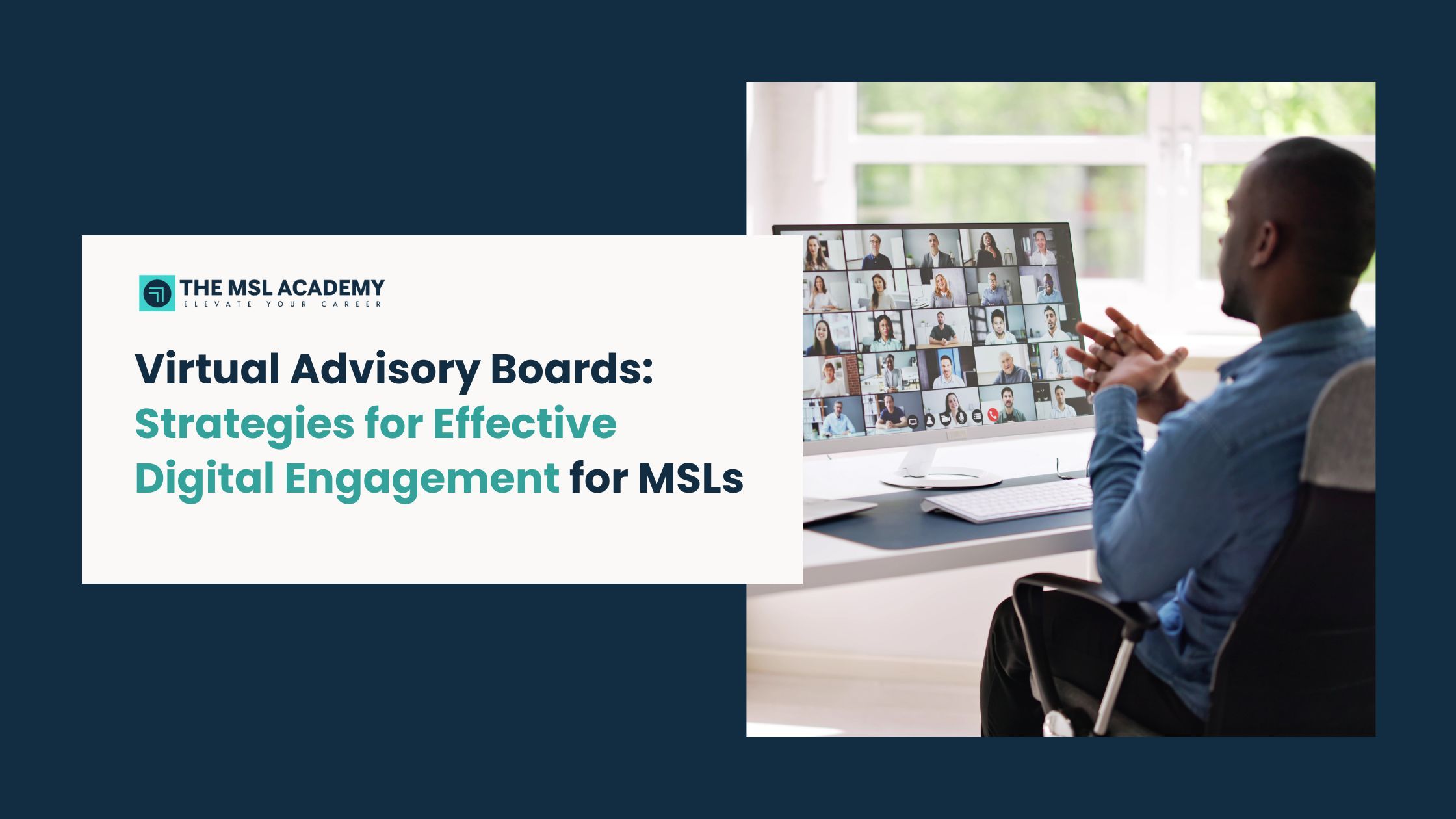Virtual Advisory Boards: Strategies for Effective Digital Engagement
Mar 14, 2025
Advisory boards have long been a staple of Medical Affairs, bringing together KOLs and other experts to gain insights into clinical practices, emerging research, and strategic directions. The rise of virtual platforms—accelerated by global events and ongoing digitization—has created both challenges and opportunities for MSLs tasked with leading these discussions.
Virtual advisory boards can match and sometimes exceed the productivity of in-person meetings. They eliminate travel constraints, allow for broader participant diversity, and can be more cost-effective. To tap into these advantages, MSLs must master the art of digital engagement, from selecting the right technology to fostering genuine participant interaction.
This article explores best practices for organizing virtual advisory boards. You’ll learn how to adapt agendas for online formats, use interactive tools to maintain engagement, and uphold scientific rigor and compliance. Whether you’re new to advisory boards or a seasoned MSL adapting to digital environments, these strategies will help ensure meaningful outcomes.
1.) The Rationale for Virtual Advisory Boards
With digital platforms becoming more commonplace, virtual advisory boards have become a practical option:
- Accessibility: Busy KOLs and international experts find it easier to attend concise virtual sessions than travel for day-long events.
• Cost-Efficiency: Companies can save on venue, travel, and accommodation costs.
• Flexibility: Virtual boards can be scheduled more frequently, keeping pace with urgent or evolving healthcare topics.
• Global Collaboration: Geographic diversity enriches discussions, bringing varied clinical perspectives.
Despite these benefits, MSLs should be mindful of technical issues, time zone differences, and “virtual fatigue.” Proper planning and platform selection are essential for success.
2.) Planning a Virtual Advisory Board: Key Considerations
Effective preparation for a virtual advisory board involves the following:
- Defining Objectives: Clarify your goals—feedback on clinical trial protocols, product positioning, or real-world evidence. Invite KOLs whose expertise aligns with these objectives.
• Technological Setup: Choose a platform with breakout rooms, polling, and chat features. Provide clear onboarding instructions, address privacy concerns, and consider whether to record the session.
• Agenda Structuring: Segment discussions into shorter blocks to avoid virtual fatigue. Share pre-reading materials, and mix presentations, Q&A, and polls to keep engagement high.
• Compliance and Regulatory Alignment: Adhere to fair market value principles for KOL compensation, protect sensitive data, and store meeting records securely.
Thorough preparation ensures your virtual advisory board remains focused, compliant, and conducive to high-quality discussion.
3.) Driving Engagement in the Virtual Environment
One of the biggest challenges with virtual formats is preventing passive listening. MSLs must design interactive elements:
- Interactive Tools: Use live polls, virtual whiteboards, or breakout sessions to gather immediate feedback and foster collaboration.
• Facilitated Discussions: Actively moderate, pose open-ended questions, and keep time to ensure each topic receives balanced attention.
• Human Touch: Encourage participants to use video, introduce themselves briefly, and consider icebreakers to establish rapport.
These tactics transform virtual advisory boards from static presentations into dynamic and collaborative experiences.
4.) Post-Meeting Follow-Up and Knowledge Translation
Maximizing the impact of a virtual advisory board doesn’t end when the session concludes:
- Summarizing Insights: Compile meeting minutes, highlight major discussion points, and share them with participants soon after.
• Maintaining Advisor Engagement: Thank participants, send any promised resources or additional data, and schedule follow-up chats if needed.
• Compliance and Record-Keeping: Store slides, recordings, and notes securely. Seek feedback on the session to refine future boards.
Effective follow-up ensures that insights gained translate into actionable recommendations for Clinical, Regulatory, or Marketing teams.
Virtual advisory boards can be just as engaging and productive as traditional, in-person sessions. By carefully planning the agenda, leveraging interactive tools, and providing comprehensive follow-up, MSLs can gather valuable insights that propel both scientific and strategic objectives forward.
If you want to further develop your virtual engagement skills, consider training sessions focused on digital facilitation, platform integration, and compliance. Embracing virtual advisory boards not only broadens your reach but also keeps pace with a healthcare landscape that increasingly values flexibility, collaboration, and global perspectives.
References
- Medical Affairs Professional Society (MAPS).
Digital Engagement in Medical Affairs: Strategy and Best Practices.
MAPS Website - Eubanks LM, Lee RB. Virtual advisory boards: A systematic approach to digital peer collaboration.
Pharmaceut Med. 2021;35(3):157-167. - Chewning B. Adoption of virtual meeting technology in medical affairs: A landscape review.
Ther Innov Regul Sci. 2020;54(6):1452-1459. - MSL Society.
Leveraging Technology for Effective Medical Advisory Boards.
MSL Society Website



